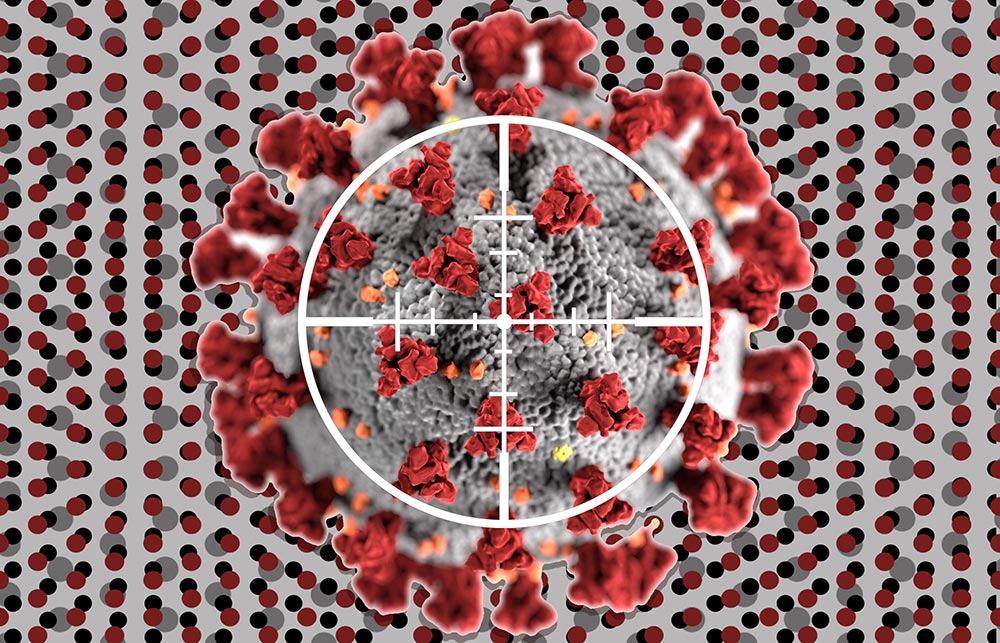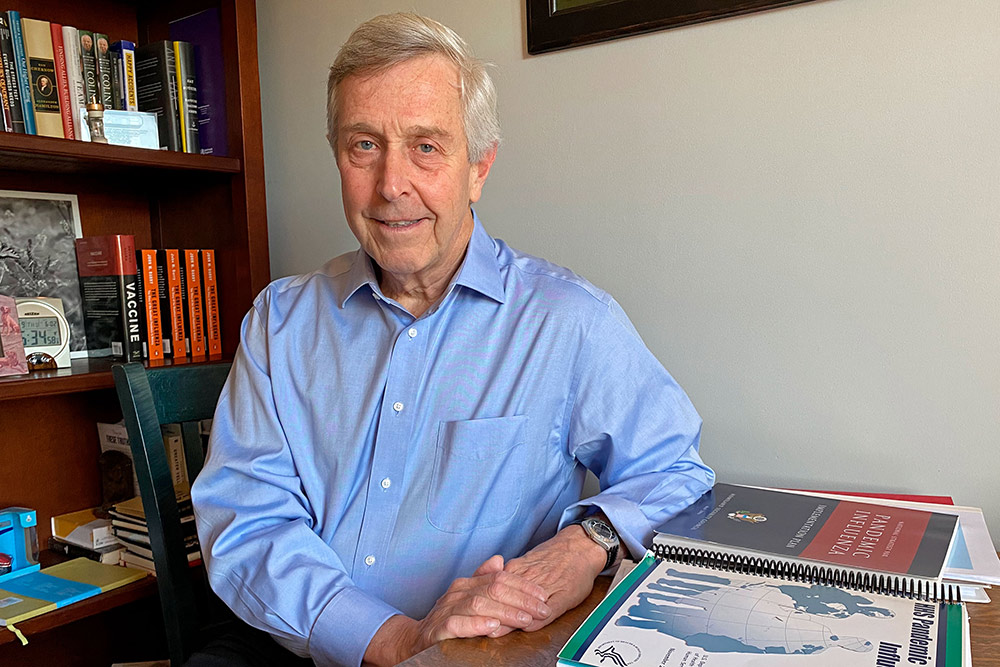
新冠疫情在中國趨緩之際,西方國家和全球的疫情正處于失控爆發(fā)階段,。如今,,醫(yī)療和科技水平全球第一的美國卻在確診人數(shù)和死亡人數(shù)上排名第一,其社交隔離措施帶來的經(jīng)濟停滯和衰退,,也需要一代人的時間去修復,。如此巨大、不可承受的生命和社會代價,,特朗普政府有著直接不可推脫的責任,。
流行病學是一門建立在推測基礎上的學科,。研究人員將數(shù)據(jù)點放在一個地圖上,,推測它們之間的關聯(lián),,繼而神奇地發(fā)現(xiàn)可能的感染點和傳播載體。這些推測,,會形成假設理論的基礎,,這之后,艱苦的工作才正式開始:科學家煞費苦心地,,全面地搜集證據(jù),,直到他們可以證實或否定這些理論。
在1854年,,歷史上最有名的流行病學專家約翰?斯諾就是這么做的,。當時,他在倫敦地圖上標出霍亂致死的病例,,最終鎖定了此次爆發(fā)的源頭:一口受污染的井和水泵?,F(xiàn)在,流行病專家也在做同樣的事情,,只是對象換成了新型冠狀病毒和它引發(fā)的呼吸道疾病“新型冠狀病毒病肺炎”,。
這場全球性危機已進入第五個月了,根據(jù)約翰霍普金斯大學的數(shù)據(jù),,新冠病毒感染確診病例激增至近200萬人,,遍布185個國家和地區(qū),導致12.5萬人死亡,。然而,,依然有眾多的謎團有待解決:有多少人在不自知的情況下染上了病毒,而且還在繼續(xù)傳播,?疫情到底要持續(xù)多久,?什么時候才能安全地去上班?然而,,沒有人知道答案,。
至于新冠病毒會如何重塑全球經(jīng)濟的一系列問題,例如,,它會對全球經(jīng)濟造成多大的破壞,?哪些行業(yè)損失最慘重,哪些會回彈,,哪些會重塑,?我們將用一整期的文章,以及大部分的每日網(wǎng)絡報道來調(diào)查這些問題,?;旧希覀冋麄€編輯團隊在過去幾個月中,一直在未完成的地圖上繪制數(shù)據(jù)點,,盡力在這些點中尋找有意義的規(guī)律,。這些當然都是推測,不過,,你也可以把它看做是金融流行病學,。
然而,在這個充滿了“看似”,,“可能”,,和各種未知的領域中,還是有一些事情我們是掌握的,,將這些教訓分門別類地列出,,可能有助于我們避免重蹈覆轍。
應對準備完全不足
“對于疫情的應對準備,,我們過于滿足了,。”身為醫(yī)生和紐約-長老會醫(yī)院主席的史蒂芬?柯文說,,“當然,,無論是單個醫(yī)院,還是一個國家,,最終都能夠挺過去,。”過去幾十年中,,有好幾次傳染病威脅到美國,,例如SARS、 中東呼吸癥候群冠狀病毒,、H1N1禽流感,,甚至是埃博拉,其中有幾種在其他地區(qū)局地肆虐,,比如SARS在亞洲的爆發(fā),,但是,沒有哪一個像新冠病毒那樣對美國造成如此之大的沖擊,??挛恼f,在錯誤的安全感下,,一些重要的問題被忽視了:“國家戰(zhàn)略儲備需要放什么,?供應鏈有多脆弱?我們有多依賴快速物流,?快速物流平時可以很快把防護用品送到醫(yī)院,,但出現(xiàn)疫情時,,卻變得效率很低?!?/p>
隨著疫情的蔓延,,這些問題得到了回答。4月初,,紐約的疫情已經(jīng)達到高峰,,每周消耗70萬個口罩,,紐約州的口罩用量則達到了350萬個,,柯文說,按照這個速度,,美國國家戰(zhàn)略儲備用不了多久就會耗盡,。2月時,衛(wèi)生與公共服務部部長亞歷克斯?阿扎向一個參議院委員會表示,,美國國家戰(zhàn)略儲備僅有3000萬個N95口罩和1200萬臺呼吸機的儲備量,,此外,還有幾百萬個可能已過了保質(zhì)期的口罩,。
美國的醫(yī)療和制藥供應鏈十分脆弱,。口罩等個人防護裝備大部分來自中國,,此外,,中國還是全球最大的活性藥物成分、現(xiàn)代醫(yī)藥化學原料生產(chǎn)商和出口商,,中國還生產(chǎn)了眾多疾病診斷用化學試劑,,例如分辨病毒株的聚合酶鏈反應測試。因此,,如果出現(xiàn)了全球疫情,,而供應鏈是從中國開始的,那么在到達美國之前可能就會中斷,。
測試診斷成瓶頸
當遇到可能具有大規(guī)模傳染性的病毒,,也就是病毒毒性高,又可以輕易地人傳人時,,任何診斷測試上的滯后都可能會導致災難性的后果,。新冠病毒便是這樣一個案例,因為美國疾控中心最初開發(fā)的診斷測試存在缺陷,,使得大規(guī)模測試很遲才開始,,但更大的問題并不僅僅是政府所說的一個故障,而是一開始,,所有的測試都必須經(jīng)由聯(lián)邦實驗室進行,,集中往往意味著瓶頸,,一旦出現(xiàn)故障,則完全無法進行下去,。
“即便一切進展順利,,哪怕疾控中心的測試也完全沒有問題,美國的篩查測試能力也根本不足以應對這樣的疫情局面,?!必撠煷祟愒\斷規(guī)范的美國食藥局前專員斯科特?戈特列布說,“大學實驗室和診所實驗室也都必須參與檢測,,但這需要時間,,因此,你得從1月份就開始和他們合作,,這樣,,到了2月和3月,才會準備好,?!?/p>
“如果我們在2月中旬時,就有能力每周測試10萬個樣本,,那么結(jié)果會大不一樣,。”戈特列布說,??挛膶Υ艘脖硎就猓骸爸挥薪⒃谠缙跍y試和診斷基礎上,我們才能對這類病毒防控進行情景規(guī)劃,?!?/p>
沒有防控規(guī)劃
現(xiàn)在的美國政府并沒有一個防控規(guī)劃。當我采訪薩賓疫苗研究所全球免疫業(yè)務主席布魯斯?杰林時,,他像幾乎所有美國人一樣,,正在居家隔離。隔離期間,,他有了時間整理自己的車庫,,在一堆上世紀90年代的玩偶底下,他發(fā)現(xiàn)了之前的聯(lián)邦政府制定的諸多防御病毒侵襲的規(guī)劃,?!耙咔橐?guī)劃,我們是曾經(jīng)是有的,?!苯芰种S刺說道,他也曾經(jīng)是前衛(wèi)生部助理副秘書長,、國家疫苗項目負責人,。2005年布什政府時代,,他主導制定了美國首個流感防控和應急規(guī)劃。
當時出現(xiàn)的“禽流感”也一度讓社會緊張無比,,決策者們做了很多推測,,一旦真的變成大流行病,要對大量人口進行隔離的話,,那經(jīng)濟與社會成本會是多少,。“其中一個原則就是要列出,,萬一人們不能外出的話,,有哪些后勤準備要做到位?!苯芰只貞浾f,,“例如,如果護士的學齡兒童呆在家,,她怎么去上班?如果人們本來就是勉強度日的,,一旦無法工作,,怎么交得起房租?怎么按時繳納抵押貸款,?如果你強迫人們呆在家中,,大量的問題就會接踵而至?!边@些為減少社區(qū)傳播的做法只是這個規(guī)劃中的一部分,。在新冠疫情期間,我們都意識到這類問題有多重要,。

最后,,這一切最發(fā)人深省的教訓可能還在于,,在這個前所未有的挑戰(zhàn)面前,在疫情造成社會幾近癱瘓的局面下,,現(xiàn)任美國政府竟然完全無所作為,。
2004年12月,小布什總統(tǒng)啟用邁克?李維特任衛(wèi)生與公共服務部的秘書長,,李維特要求該機構(gòu)的所有部門負責人向其匯報各自職責,。
“他在決定應該保留誰,剔除誰,?!鼻肮残l(wèi)生應急響應部門助理秘書長,、現(xiàn)任世衛(wèi)組織助理總干事斯圖爾特?西蒙森說,“我于是向他匯報應急響應方面的情況,,會議結(jié)束時,,我給了他兩本書:約翰?巴里關于1918年西班牙流感的《大流感》和《911委員會報告》?!?/p>
“我當時說的大概意思是,,我們認為我們將迎來另一場1918大流感。這是不可避免的,,或早或晚都會發(fā)生,。如果它發(fā)生時你還在任,而且沒能意識到它的威脅,,那么這本書的下一卷,,你將成為主角?!保ㄘ敻恢形木W(wǎng))
譯者:MS
責編:雨晨
新冠疫情在中國趨緩之際,,西方國家和全球的疫情正處于失控爆發(fā)階段。如今,,醫(yī)療和科技水平全球第一的美國卻在確診人數(shù)和死亡人數(shù)上排名第一,,其社交隔離措施帶來的經(jīng)濟停滯和衰退,也需要一代人的時間去修復,。如此巨大,、不可承受的生命和社會代價,特朗普政府有著直接不可推脫的責任,。
流行病學是一門建立在推測基礎上的學科,。研究人員將數(shù)據(jù)點放在一個地圖上,推測它們之間的關聯(lián),,繼而神奇地發(fā)現(xiàn)可能的感染點和傳播載體,。這些推測,會形成假設理論的基礎,,這之后,,艱苦的工作才正式開始:科學家煞費苦心地,全面地搜集證據(jù),,直到他們可以證實或否定這些理論,。
在1854年,歷史上最有名的流行病學專家約翰?斯諾就是這么做的,。當時,,他在倫敦地圖上標出霍亂致死的病例,最終鎖定了此次爆發(fā)的源頭:一口受污染的井和水泵?,F(xiàn)在,,流行病專家也在做同樣的事情,,只是對象換成了新型冠狀病毒和它引發(fā)的呼吸道疾病“新型冠狀病毒病肺炎”。
這場全球性危機已進入第五個月了,,根據(jù)約翰霍普金斯大學的數(shù)據(jù),,新冠病毒感染確診病例激增至近200萬人,遍布185個國家和地區(qū),,導致12.5萬人死亡,。然而,依然有眾多的謎團有待解決:有多少人在不自知的情況下染上了病毒,,而且還在繼續(xù)傳播,?疫情到底要持續(xù)多久?什么時候才能安全地去上班,?然而,,沒有人知道答案。
至于新冠病毒會如何重塑全球經(jīng)濟的一系列問題,,例如,,它會對全球經(jīng)濟造成多大的破壞?哪些行業(yè)損失最慘重,,哪些會回彈,,哪些會重塑?我們將用一整期的文章,,以及大部分的每日網(wǎng)絡報道來調(diào)查這些問題?;旧?,我們整個編輯團隊在過去幾個月中,一直在未完成的地圖上繪制數(shù)據(jù)點,,盡力在這些點中尋找有意義的規(guī)律,。這些當然都是推測,不過,,你也可以把它看做是金融流行病學,。
然而,在這個充滿了“看似”,,“可能”,,和各種未知的領域中,還是有一些事情我們是掌握的,,將這些教訓分門別類地列出,,可能有助于我們避免重蹈覆轍。
應對準備完全不足
“對于疫情的應對準備,,我們過于滿足了,?!鄙頌獒t(yī)生和紐約-長老會醫(yī)院主席的史蒂芬?柯文說,“當然,,無論是單個醫(yī)院,,還是一個國家,最終都能夠挺過去,?!边^去幾十年中,有好幾次傳染病威脅到美國,,例如SARS,、 中東呼吸癥候群冠狀病毒、H1N1禽流感,,甚至是埃博拉,,其中有幾種在其他地區(qū)局地肆虐,比如SARS在亞洲的爆發(fā),,但是,,沒有哪一個像新冠病毒那樣對美國造成如此之大的沖擊??挛恼f,,在錯誤的安全感下,一些重要的問題被忽視了:“國家戰(zhàn)略儲備需要放什么,?供應鏈有多脆弱,?我們有多依賴快速物流?快速物流平時可以很快把防護用品送到醫(yī)院,,但出現(xiàn)疫情時,,卻變得效率很低?!?/p>
隨著疫情的蔓延,,這些問題得到了回答。4月初,,紐約的疫情已經(jīng)達到高峰,,每周消耗70萬個口罩,紐約州的口罩用量則達到了350萬個,,柯文說,,按照這個速度,美國國家戰(zhàn)略儲備用不了多久就會耗盡,。2月時,,衛(wèi)生與公共服務部部長亞歷克斯?阿扎向一個參議院委員會表示,美國國家戰(zhàn)略儲備僅有3000萬個N95口罩和1200萬臺呼吸機的儲備量,此外,,還有幾百萬個可能已過了保質(zhì)期的口罩,。
美國的醫(yī)療和制藥供應鏈十分脆弱??谡值葌€人防護裝備大部分來自中國,,此外,中國還是全球最大的活性藥物成分,、現(xiàn)代醫(yī)藥化學原料生產(chǎn)商和出口商,,中國還生產(chǎn)了眾多疾病診斷用化學試劑,例如分辨病毒株的聚合酶鏈反應測試,。因此,,如果出現(xiàn)了全球疫情,而供應鏈是從中國開始的,,那么在到達美國之前可能就會中斷,。
測試診斷成瓶頸
當遇到可能具有大規(guī)模傳染性的病毒,也就是病毒毒性高,,又可以輕易地人傳人時,,任何診斷測試上的滯后都可能會導致災難性的后果。新冠病毒便是這樣一個案例,,因為美國疾控中心最初開發(fā)的診斷測試存在缺陷,,使得大規(guī)模測試很遲才開始,但更大的問題并不僅僅是政府所說的一個故障,,而是一開始,,所有的測試都必須經(jīng)由聯(lián)邦實驗室進行,集中往往意味著瓶頸,,一旦出現(xiàn)故障,,則完全無法進行下去。
“即便一切進展順利,,哪怕疾控中心的測試也完全沒有問題,美國的篩查測試能力也根本不足以應對這樣的疫情局面,?!必撠煷祟愒\斷規(guī)范的美國食藥局前專員斯科特?戈特列布說,“大學實驗室和診所實驗室也都必須參與檢測,,但這需要時間,,因此,你得從1月份就開始和他們合作,,這樣,,到了2月和3月,才會準備好?!?/p>
“如果我們在2月中旬時,,就有能力每周測試10萬個樣本,那么結(jié)果會大不一樣,?!备晏亓胁颊f??挛膶Υ艘脖硎就猓骸爸挥薪⒃谠缙跍y試和診斷基礎上,,我們才能對這類病毒防控進行情景規(guī)劃?!?/p>
沒有防控規(guī)劃
現(xiàn)在的美國政府并沒有一個防控規(guī)劃,。當我采訪薩賓疫苗研究所全球免疫業(yè)務主席布魯斯?杰林時,他像幾乎所有美國人一樣,,正在居家隔離,。隔離期間,他有了時間整理自己的車庫,,在一堆上世紀90年代的玩偶底下,,他發(fā)現(xiàn)了之前的聯(lián)邦政府制定的諸多防御病毒侵襲的規(guī)劃?!耙咔橐?guī)劃,,我們是曾經(jīng)是有的?!苯芰种S刺說道,,他也曾經(jīng)是前衛(wèi)生部助理副秘書長、國家疫苗項目負責人,。2005年布什政府時代,,他主導制定了美國首個流感防控和應急規(guī)劃。
當時出現(xiàn)的“禽流感”也一度讓社會緊張無比,,決策者們做了很多推測,,一旦真的變成大流行病,要對大量人口進行隔離的話,,那經(jīng)濟與社會成本會是多少,。“其中一個原則就是要列出,,萬一人們不能外出的話,,有哪些后勤準備要做到位?!苯芰只貞浾f,,“例如,,如果護士的學齡兒童呆在家,她怎么去上班,?如果人們本來就是勉強度日的,,一旦無法工作,怎么交得起房租,?怎么按時繳納抵押貸款,?如果你強迫人們呆在家中,大量的問題就會接踵而至,?!边@些為減少社區(qū)傳播的做法只是這個規(guī)劃中的一部分。在新冠疫情期間,,我們都意識到這類問題有多重要,。
最后,這一切最發(fā)人深省的教訓可能還在于,,在這個前所未有的挑戰(zhàn)面前,,在疫情造成社會幾近癱瘓的局面下,現(xiàn)任美國政府竟然完全無所作為,。
2004年12月,,小布什總統(tǒng)啟用邁克?李維特任衛(wèi)生與公共服務部的秘書長,李維特要求該機構(gòu)的所有部門負責人向其匯報各自職責,。
“他在決定應該保留誰,,剔除誰?!鼻肮残l(wèi)生應急響應部門助理秘書長,、現(xiàn)任世衛(wèi)組織助理總干事斯圖爾特?西蒙森說,“我于是向他匯報應急響應方面的情況,,會議結(jié)束時,,我給了他兩本書:約翰?巴里關于1918年西班牙流感的《大流感》和《911委員會報告》?!?/p>
“我當時說的大概意思是,,我們認為我們將迎來另一場1918大流感。這是不可避免的,,或早或晚都會發(fā)生,。如果它發(fā)生時你還在任,而且沒能意識到它的威脅,,那么這本書的下一卷,你將成為主角,?!保ㄘ敻恢形木W(wǎng))
譯者:MS
責編:雨晨
Epidemiology is a science of “seems to be” steps. Researchers plot data points on a map and speculate connections between them, conjuring up likely nodes of infection and possible vectors of transmission. Such guessing, if you will, forms the basis for hypotheses, and then the truly hard work begins: Scientists gather evidence—systematically, painstakingly—until they can prove or disprove those theories.
That’s what John Snow, history’s most famous epidemiologist, did in 1854, when he plotted deadly cases of cholera on a map of London, eventually tracing the outbreak to a single contaminated well and water pump. And that’s what’s happening now, with the novel coronavirus and respiratory disease it causes, COVID-19.
As we enter the fifth month of this worldwide crisis—a viral pandemic that has grown feverishly to nearly 2 million confirmed cases in 185 countries or regions, and more than 125,000 deaths, according to researchers at Johns Hopkins University—there are still plenty of mysteries to solve. How many people are unknowingly infected with (and possibly spreading) the virus? How long will the pandemic last? When is it safe to go back to work? Well, no one quite knows.
As to the question of how the coronavirus will reshape the global economy—How much damage will it do? Which industries will suffer the most, bounce back, be reinvented?—we have devoted this entire issue and most of our daily online coverage to investigating. Virtually our entire editorial team has spent the past few months plotting data points on unfinished maps and doing our best to draw meaningful patterns among them. It’s guesswork, to be sure—though you might think of it as financial epidemiology as well.
But in the sea of seems-to-bes, maybes, and outright unknowns, there are also things that we do know—and cataloging those lessons will perhaps keep us from repeating our mistakes again.
“Let’s start with the premise that we’ve been complacent about our preparation for such a pandemic,” says Steven Corwin, who is both a physician and the president and CEO of New York–Presbyterian hospital. “And I don’t think there’s any question—whether it’s an individual hospital, whether it’s as a country, we’ve been able to skate by.” For all the would-be plagues that have threatened American shores in the past couple of decades—SARS, MERS-CoV, H1N1 influenza, even Ebola—none delivered the knockout blow to the U.S. that COVID-19 has, even if a few were devastating elsewhere. Our false sense of security has led us to put off tackling important questions, Corwin says: “What do you need in the Strategic National Stockpile? How fragile is the supply chain? How much are we dependent upon just-in-time delivery—which, though it makes us more efficient in terms of health care, doesn’t necessarily provide resiliency?”
As it happens, the pandemic answered those questions for us. “We’re now at the peak of this in New York,” says Corwin, in early April. “We’re using 700,000 masks a week, and we’re 20% of the New York system—which works out to 3.5 million masks this week for the downstate New York area. At that rate, the Strategic National Stockpile doesn’t go a long way.” Health and Human Services Secretary Alex Azar told a Senate committee in February that the Strategic National Stockpile had a mere 30 million surgical masks and 12 million respirators (the N95 masks that filter out most smaller viral particles) in reserve, plus a few million more that were likely past their expiration date.
We know that our medical and pharmaceutical supply chains are vulnerable. It’s not only masks and other personal protective equipment (PPE) that largely come from China. That nation, for example, is also the world’s largest producer and exporter of active pharmaceutical ingredients, the chemical feedstock of modern medicine. China also produces many of the chemical reagents that are used in disease diagnostics, such as polymerase chain reaction (or PCR) tests that identify viral strains. So, if in the midst of a pandemic, the supply starts there, the chain may break before it gets here.
On that front, we know that, when it comes to a potentially pandemic strain—a virus that is both virulent and easily transmissible from human to human—any lag in diagnostic testing can be catastrophic. That has been the case with the novel coronavirus, for which widespread testing was badly delayed due to the development of a flawed diagnostic test at the CDC. But the bigger problem wasn’t the glitch in the government’s assay; rather, it was the policy of centralizing testing at one federal lab. Centralizing, in short, just meant bottlenecking.
“Even if everything went perfectly, even if the CDC tests had rolled out perfectly, there was no way that the screening capacity in the U.S. was going to be robust enough to deal with a pandemic strain here in the U.S.,” says Scott Gottlieb, a physician and former commissioner of the FDA, which regulates such diagnostics. “You always had to get the academic labs [at universities] and the clinical labs in the game. And that takes time. So you needed to be working with them in January to get them ready for February and March.
“If we had the capacity in place in mid-February to test 100,000 samples a week,” says Gottlieb, “it could have made a very big difference.” Corwin agrees: “All the scenario planning around this type of virus was predicated on early testing and diagnosis.”
Which brings up something else we know: A plan is not a process. When I reach Bruce Gellin, the president of global immunization at the Sabin Vaccine Institute, he—like most everyone else in America—is under home quarantine, which has afforded him time to clean out his garage. There, under piles of Beanie Babies and other 1990s detritus, Gellin has found volumes of several of the federal government’s plans to fight a viral scourge. “We had a plandemic,” quips Gellin, a former deputy assistant secretary for Health and leader of HHS’s National Vaccine Program Office. In 2005, under the Bush administration, he led the creation of America’s first pandemic influenza preparedness and response plan.
This was the “bird flu” era, and federal policy makers were imagining the economic and social costs of quarantining huge swaths of the population, if it came to that. “One of the principles was outlining the backstops that needed to be in place to allow people to stay in place,” Gellin recalls. “How would a nurse be able to work if her school-age kids were home, for example? How would someone living hand-to-mouth not get kicked out of her house if she can’t work—or a homeowner not default on a mortgage? There is a huge cascade of stuff that has to happen if you’re going to force people to stay at home.” Such “community mitigation,” as they called it, was just part of the planning within the plan. In the era of COVID-19, we are all learning how essential such questions are.
Finally, the most powerful lesson of all? may come from witnessing government inaction in the face of a once-in-a-generation challenge—and knowing the cost of that paralysis.
After President George W. Bush tapped Michael Leavitt to succeed former Wisconsin Gov. Tommy Thompson as secretary of Health and Human Services in December 2004, Leavitt asked all of the agency’s operating and staff division heads to come over and brief him on their respective portfolios.
“He was trying to decide who to keep, maybe, and who not to keep,” says Stewart Simonson, then a former assistant secretary for Public Health Emergency Preparedness and now assistant director-general for the World Health Organization’s office at the United Nations. “And so I went over to brief on the preparedness and response portfolio, and then at the end of the meeting, I gave him two books: The Great Influenza—John Barry’s book on the 1918 flu epidemic—and the 9/11 Commission Report.
“And what I said is—something to the effect of that we know we will have another 1918. It’s inevitable. It’s just a matter of time. And if it happens while you’re secretary, and you’re not aware of the threat, this other book’s next volume will be about you.”






